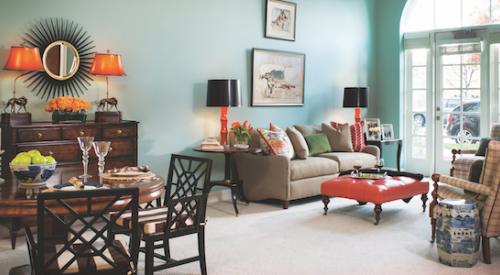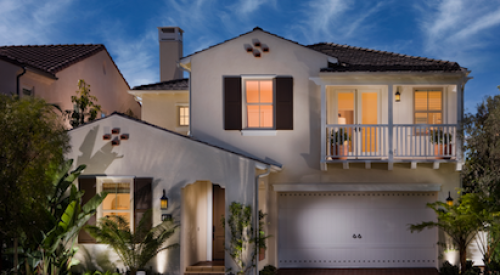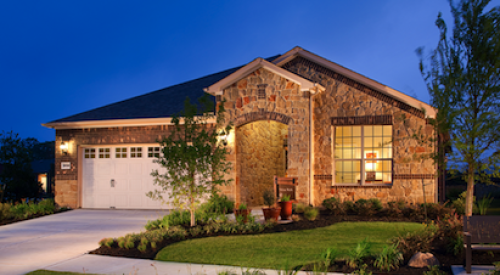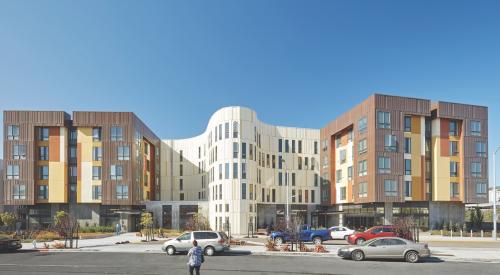67 The number, in millions, of Americans over the age of 55 in 2005
Source: U.S. Census Bureau
85.6 Millions of Americans over the age of 55 there will be by 2014
Source: NAHB
90 Percentage of people age 50 and older who want to continue living at their current address indefinitely.
Source: AARP
Baby boomers and active adults are probably the most talked-about demographic groups in America when it comes to forecasting new-home trends. In fact, the term baby boomer is often used as a synonym for active adult. Defining the active-adult segment isn't so easy, though; it spans two generations and a diversity of values and preferences.
According to some experts, baby boomers aren't officially part of the market just yet. "The first [boomers] just turned 60 last year, and the typical active-adult buyer is somewhere between 62 and 64, if not a little older," says Mike Kephart, founder of Kephart Community Planning Architecture in Denver. "We'll see baby boomers begin to enter this market in the next five years."
Likewise, Andy Detterline, a marketing consultant based in Rose Valley, Pa., says most of the people who are moving into 55-plus communities are in their mid-60s. "They're generally not making that move at the point where their kids are first out of the house," says Detterline. But when boomers do begin to surge into the market, big changes are likely to ensue, says Kephart principal Doug Van Lerberghe.
Misunderstood Boomers
"There are several misconceptions about baby boomers as they're aging," says Van Lerberghe. "One is that they're wealthy, and I don't believe that's true. They've made a lot of money and live quite well as a group, but they haven't been the greatest savers, so retirement may come a lot later for them. We may not be looking at [the baby boomer] active-adult market all that strongly for five or more years."
Bob Eck, principal of Plus One Communities in Denver, says it's easy to be misled by financial projections for boomers. "They'll be wealthier and less frugal [than their parents], but you'll also have the strata of buyers who can afford a $250,000 home as well as those who can afford a $450,000 home."
Another misconception is that older boomers won't behave any differently than their parents, who are often referred to as the Eisenhower generation and often gravitate toward a large retirement community in Sunbelt locations. "Historically, only about 10 percent of those over 55 have chosen that as a lifestyle, and yet it's one that is personified as the active-adult lifestyle," says Eck.
Walking trails have overtaken golf as the top-rated amenity, one community architect reports.
The Residences at Bulle Rock in Havre de Grace, Md., became an age-targeted community after market research showed that not all prospective buyers were on board with the 55-and-over limitation. Homes are required by zoning to have either first-floor master suites or elevators for access to the second floor.
"Most people are choosing where they want to live based on location, and they don't necessarily want to move full-time to destination communities," says Brenda Desjardins, principal of New Home Marketing Services in Annapolis, Md., who conducted the original market study for Bulle Rock. "They want to be near their family and their resources."
To tempt active adults out of their current abodes, big national builders such as Del Webb and Levitt and Sons are focusing on so-called intergenerational communities that have a mix of age groups as well as working people and retirees.
Beyond Golf
Many of the active-adult communities Kephart's firm designs don't have golf courses, partly because the communities are smaller and also because the United States is somewhat overbuilt in golf courses. The No. 1 amenity is walking trails, not golf, and home buyers like a mix of soft and hard surfaces.
"If golf is important, most of the smaller builders are looking for land that's fairly close to an existing golf course," says Van Lerberghe. "Then they can share in those amenities and maybe make a deal with the country club to provide discount memberships or something like that."
Seth Wise, president of Levitt and Sons in Fort Lauderdale, Fla., thinks the "active adult" moniker may be too broad. "Demographically, the older buyer still may be looking for the large clubhouse and card rooms and some of the other things associated with an older group," says Wise. "But younger buyers are very focused on yoga, walking trails and fitness centers. There's a broader cross-section of amenities going in."
Plus One's Eck says his company is developing a handful of active-adult projects in Colorado and Texas. None are more than 1,200 units.
"The Eisenhower generation was synonymous with retirement, and resort-style communities succeeded very well with those buyers," says Eck. "Boomers don't associate those kinds of communities with retirement; they see them as a lifestyle choice. Continuing to work is one of those lifestyle choices, too."
Today's active-adult buyer is less about being a number and more about being an individual, Eck says. They want a little more intimacy, which translates to smaller but still highly amenitized communities.
The boomer's strong interest in education is fostering some relationships between builders and universities. Levitt, for instance, has an agreement with a local college to offer programs tailored to residents of the Seasons at Laurel Canyon in Canton, Ga.
About the House
Though universal design will be a consideration for older boomers as they move into the active-adult market, builders can accommodate their future needs without necessarily offering a full menu of accessible features. In the back of their minds, boomers think an aging parent will move in with them one day, but it's not a strong driver in their decision to buy, says Eck. And it's crucial to recognize differences in household structure; for example, some boomers may be raising a young grandchild rather than caring for an elderly relative.
"People will put things like grab bars [in bathtubs] on a list of things they want," says Detterline. "You can put on your [collateral] material that the house is prefitted for grab bars, though you don't necessarily install them. But you absolutely do not want to discuss that you can run a wheelchair through the home."
Although active adults have traditionally avoided two-story homes because of the stairs, Kephart is trying to make such plans more attractive to buyers by adding elevators.
"I've talked to a number of builders about it, and they all agree that by building a two-story versus a one-story house — same square footage — they can save enough on hard construction costs to install the elevator," says Kephart. "It's a luxury item right now and could be marketed as such."
While housing is almost secondary to the active adult's buying decision, they're looking for plenty of storage without excess square footage. This is true regardless of the buyer's age.
One thing is for certain: builders will need to woo active adults in increasingly compelling ways, because their biggest competition is the customer's existing home, says Detterline. "Having to get their house ready [to sell] is an overwhelming task," she says. "They have to be pulled, not pushed, into a better life."
|











